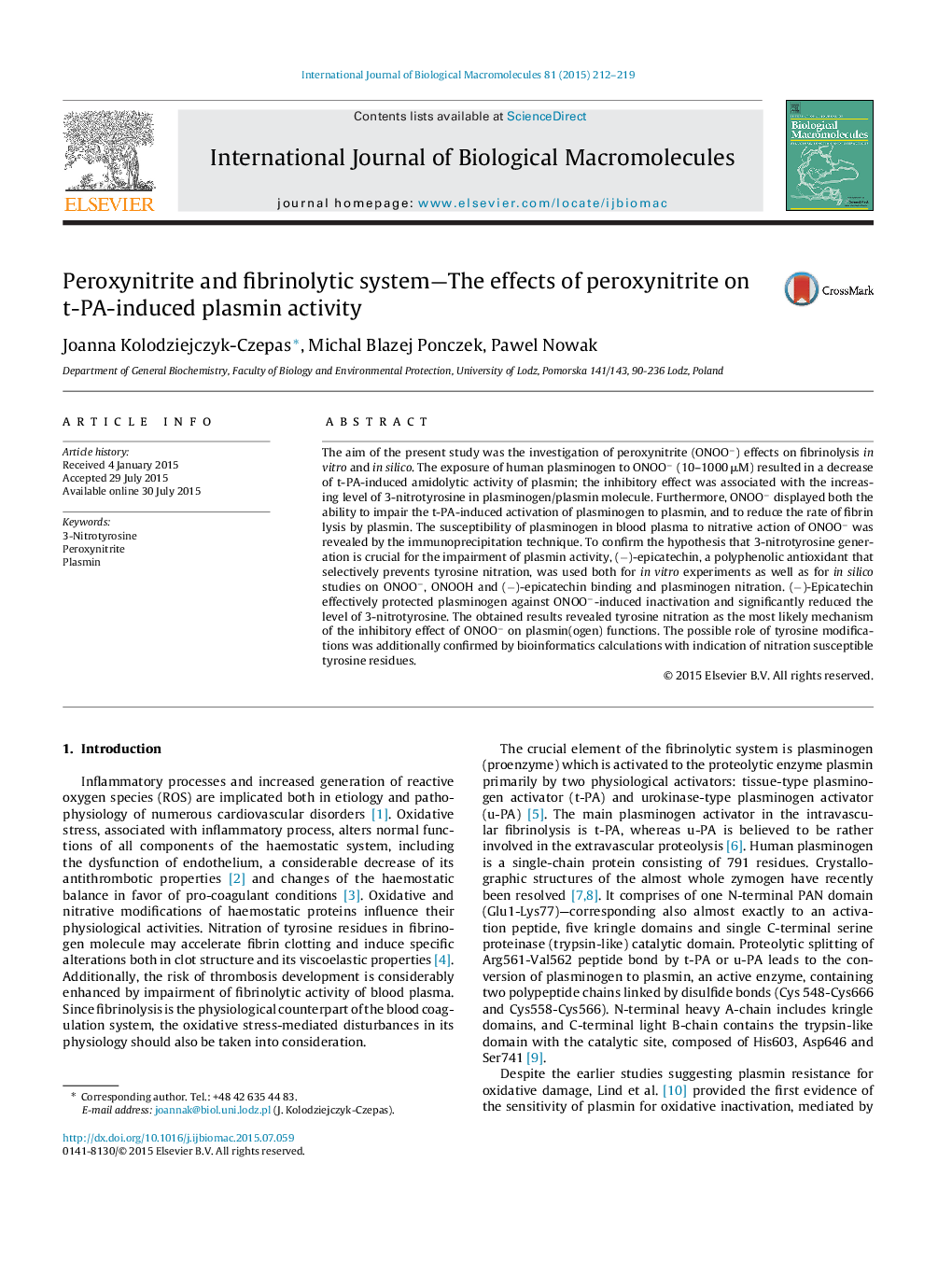| Article ID | Journal | Published Year | Pages | File Type |
|---|---|---|---|---|
| 8330135 | International Journal of Biological Macromolecules | 2015 | 8 Pages |
Abstract
The aim of the present study was the investigation of peroxynitrite (ONOOâ) effects on fibrinolysis in vitro and in silico. The exposure of human plasminogen to ONOOâ (10-1000 μM) resulted in a decrease of t-PA-induced amidolytic activity of plasmin; the inhibitory effect was associated with the increasing level of 3-nitrotyrosine in plasminogen/plasmin molecule. Furthermore, ONOOâ displayed both the ability to impair the t-PA-induced activation of plasminogen to plasmin, and to reduce the rate of fibrin lysis by plasmin. The susceptibility of plasminogen in blood plasma to nitrative action of ONOOâ was revealed by the immunoprecipitation technique. To confirm the hypothesis that 3-nitrotyrosine generation is crucial for the impairment of plasmin activity, (â)-epicatechin, a polyphenolic antioxidant that selectively prevents tyrosine nitration, was used both for in vitro experiments as well as for in silico studies on ONOOâ, ONOOH and (â)-epicatechin binding and plasminogen nitration. (â)-Epicatechin effectively protected plasminogen against ONOOâ-induced inactivation and significantly reduced the level of 3-nitrotyrosine. The obtained results revealed tyrosine nitration as the most likely mechanism of the inhibitory effect of ONOOâ on plasmin(ogen) functions. The possible role of tyrosine modifications was additionally confirmed by bioinformatics calculations with indication of nitration susceptible tyrosine residues.
Keywords
Related Topics
Life Sciences
Biochemistry, Genetics and Molecular Biology
Biochemistry
Authors
Joanna Kolodziejczyk-Czepas, Michal Blazej Ponczek, Pawel Nowak,
